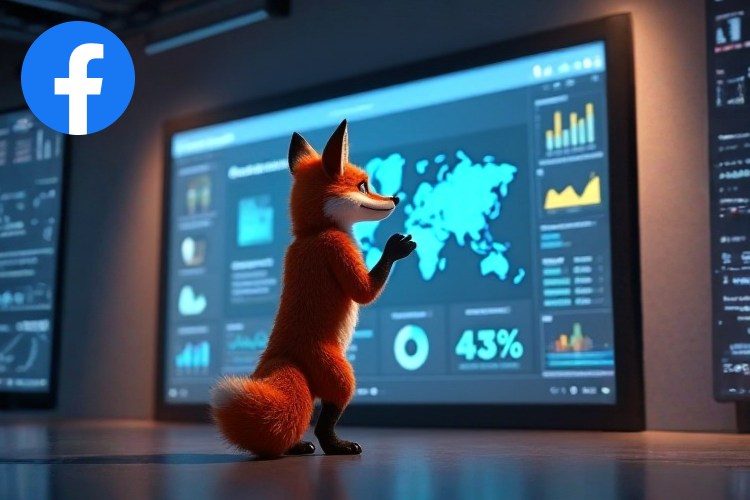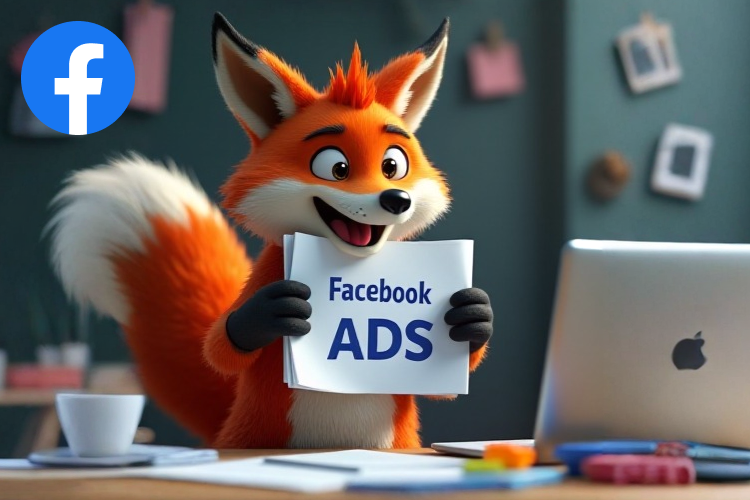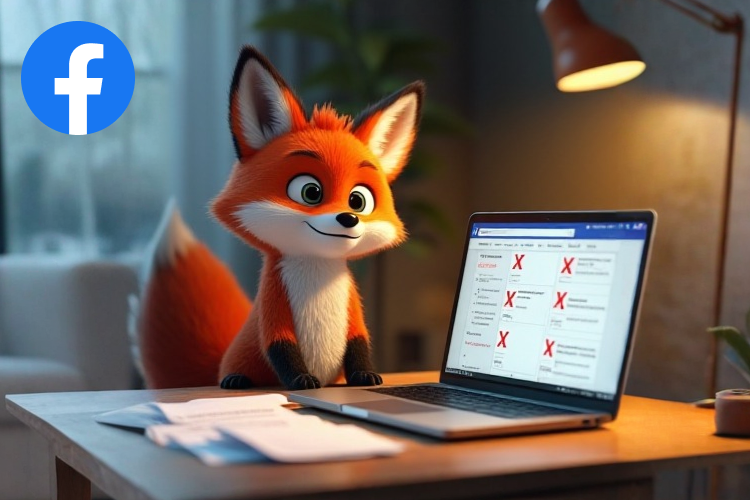How to find and set up a target audience?

- Facebook Audience Types: Detailed Targeting
- Geographic targeting
- Demographic targeting
- Interests and behavior
- Detailed demographic data
- How to use Custom Audiences for remarketing
- What is Custom Audiences?
- How to create Custom Audiences
- How to use Custom Audiences for remarketing
- Remarketing effectiveness analysis
- Lookalike Audiences: search for similar audiences
- What are Lookalike Audiences?
- How to create Lookalike Audiences
- Benefits of Lookalike Audiences
- Using Lookalike Audiences in your advertising strategy
- Results analysis and optimization
1. Facebook Audience Types: Detailed Targeting
One of the key factors in a successful Facebook advertising campaign is choosing the right target audience. The effectiveness of your advertising and the conversion rate depend on how accurately you define your audience. Facebook provides a variety of detailed targeting tools that allow marketers to focus on those who are most likely to become their customers.
Geographic targeting
Geo-targeting allows advertisers to limit the display of their ads to specific geographic areas. This can be useful for local businesses that serve customers in a specific region or for international brands that want to reach new markets.
Example: Imagine you run a cafe in Lviv. Using geotargeting, you can set your ads to appear to people within a 10 km radius of your establishment. This will allow you to focus your advertising efforts on locals and tourists who are nearby.
“Geographic targeting allows you to focus your advertising efforts on those who are physically close to your business, which increases your chances of conversion.”
Demographic targeting
Demographic targeting includes parameters such as age, gender, education level, marital status, and more. This allows you to more precisely customize your audience, reaching out to specific groups of people who may be interested in your product or service.
Example: A brand selling luxury cosmetics might target its advertising to women aged 25-45 with a high income who are interested in premium products.
“Demographic targeting allows you to precisely identify who your audience is and provides a personalized approach to each consumer group.”
Interests and behavior
This is one of the most powerful targeting tools, allowing you to target ads to people with specific interests or activities. You can use these parameters to create audiences that are most interested in your product.
Example: If you sell sports equipment, you can target people who regularly go to the gym or are interested in a healthy lifestyle.
“Targeting by interests and behavior allows you to find an audience that is already interested in your product, which significantly increases the chances of successful interaction.”
Detailed demographic data
Detailed demographic data allows you to delve even deeper into the characteristics of your audience. For example, you can target people by income level, profession, presence of children, or even type of housing.
Example: An insurance company can target its advertising to owners of a certain class of car or to those who have recently purchased a new car.
“Detailed demographic data helps you create a profile of your ideal customer and tailor your advertising with maximum accuracy.”
Facebook granular targeting is the art of combining different parameters to create an audience that is most likely to be interested in your product or service. It’s important to remember that an effective advertising campaign is not only about reaching a large number of people, but also about showing your ads to those who are truly interested in what you offer. With Facebook’s powerful targeting tools, you can achieve just that.
2. How to use Custom Audiences for remarketing
One of the most effective strategies in Facebook advertising is remarketing. It allows you to reach people who have already interacted with your brand, increasing the chances of conversion. This is done using so-called “Custom Audiences”. Let’s take a look at how to properly create and use these audiences for maximum results.
What are Custom Audiences?
Custom Audiences is a tool that allows you to create audiences from people who have already interacted with your business. These can be:
- Visitors to your website.
- People who interacted with your app.
- Users who have subscribed to your email.
- People who watched your videos or interacted with your posts on Facebook or Instagram.
“Custom audiences allow you to reach those who are already familiar with your brand, which greatly increases the likelihood of re-engagement.”
How to create Custom Audiences?
1. Using Facebook Pixel
Facebook Pixel is a tool that helps you track user actions on your website. With Pixel, you can create audiences based on the behavior of users who have visited your site.
Steps to create a Pixel-based audience:
- Install the Facebook Pixel on your website.
- In your advertising account, go to the “Audiences” section.
- Select “Create Audience” > “Custom Audience.”
- Select “Website” and set the conditions (for example, all site visitors in the last 30 days).
Example: A clothing store can create an audience of people who viewed a specific product page but didn’t make a purchase. They can then show these people an ad with a product reminder or a special discount.
2. Import customer lists
Another way to create personalized audiences is to import customer lists. These could be subscribers to your newsletter or customers who have purchased from you in the past.
Steps to create an audience based on a customer list:
- In your advertising dashboard, select “Create Audience” > “Custom Audience”.
- Select “Customer List” and upload your data file (e.g. email addresses).
Example: A company selling software can create an audience of its existing customers and show them ads for new products or updates.
How to use Custom Audiences for remarketing?
1. Reminder ads
Remarketing allows you to show ads to people who have already shown interest in your product but haven’t made a purchase. This could be a product reminder ad or a discount offer to encourage the user to complete the purchase.
Example: An online store can show an ad with a reminder about a product left in the cart with an additional discount for the next 24 hours.
2. Cross-selling and upselling
Custom Audiences can also be used to cross-sell (offer additional products) or upsell (offer more expensive versions of a product) to existing customers.
Example: A user who has purchased a smartphone may see ads for accessories such as cases or headphones.
3. Re-engagement
With Custom Audiences, you can reach users who have lost interest in your brand. This could be a special campaign with a reminder about your services or promotions to bring customers back.
Example: A fitness center can send a special offer to customers who have stopped attending classes to get them back into training.
“Remarketing is a great way to increase conversions because you’re reaching people who are already familiar with your product and may be interested in purchasing.”
Remarketing effectiveness analysis
Once you’ve launched your remarketing campaigns, it’s important to analyze their effectiveness. Use Facebook Ads analytics to measure your CTR (Click-Through Rate), conversions, and ROI (Return on Investment). This will help you understand how successful your strategy is and where you can make improvements.
“Analyzing results allows you to not only understand what works, but also find new opportunities to improve advertising campaigns.”
Custom Audiences is a powerful tool that allows you to reach people who already have a certain level of interest in your brand. Using this feature effectively will help increase conversions and improve the ROI of your Facebook advertising campaigns.
3. Lookalike Audiences: search for similar audiences
Lookalike Audiences are one of the most powerful tools in Facebook Ads that allow you to reach new customers who are similar to your existing ones. This approach is based on creating audiences of people who have similar characteristics to your best customers. In this section, we will take a detailed look at how to create Lookalike Audiences and use them to grow your business.
What are Lookalike Audiences?
Lookalike Audiences are audiences created based on your existing personalized audiences (Custom Audiences), which Facebook analyzes and finds similar users based on their behavior and demographics.
“Lookalike Audiences help you find people who are not yet familiar with your brand but have a high probability of becoming your customers.”
How to create Lookalike Audiences?
1. Choosing a core audience
The first step in creating Lookalike Audiences is to choose a base audience. This can be:
- The audience of visitors to your website.
- Client list.
- People who interacted with your content on Facebook or Instagram.
Steps to create Lookalike Audiences:
- In your advertising account, go to the “Audiences” section.
- Select “Create Audience” > “Lookalike Audience.”
- Choose a base audience (for example, a Custom Audience, which consists of your best customers).
- Specify the country or region where you want to find a similar audience.
- Set the audience size (from 1% to 10% of the population of the selected region, where 1% is the most similar audience).
Example: An online sports equipment store can create a Lookalike Audience based on an audience of customers who have made a purchase in the last 30 days.
2. Setting the audience size
The size of your Lookalike Audiences determines the level of similarity to your base audience. A smaller percentage (1%) means a more similar audience, but it will be smaller. A larger percentage (up to 10%) reaches more people, but they may be less similar to your base audience.
If your business is targeting a narrow market segment, it’s better to use a lower percentage to attract only the most relevant users.
Benefits of Lookalike Audiences
1. Effectively attracting new customers
Lookalike Audiences allow you to reach new customers who are likely to be interested in your product or service. This is especially useful for businesses that want to expand their customer base without taking too much risk.
“Instead of showing ads to everyone at once, you’re reaching out to people who already have similar traits to your best customers.”
2. Increase conversions
Because they are similar to existing customers, Lookalike Audiences typically have higher conversion rates, meaning you get more results for the same ad spend.
Small businesses that use Lookalike Audiences can see a significant increase in leads or sales because the ads reach the exact audience that is most likely to be interested in the product.
3. Increasing advertising effectiveness
Lookalike Audiences help optimize advertising costs because you target your efforts to the most relevant audience, which reduces the cost per customer acquisition.
“Advertising effectiveness increases when you focus on quality audiences who are more likely to take a targeted action.”
Using Lookalike Audiences in your advertising strategy
1. Testing different base audiences
It’s worth testing the creation of Lookalike Audiences based on different base audiences to understand which one brings the best results.
You can create Lookalike Audiences based on repeat customers and compare them to your audience of new customers.
2. Use with other audience types
Lookalike Audiences can be combined with other audience types, such as detailed targeting or Custom Audiences, for even greater effectiveness.
Combining Lookalike Audiences with demographic targeting will allow you to reach specific groups of users with a high probability of interest.
Results analysis and optimization
After launching your Lookalike Audiences campaigns, it’s important to analyze results and optimize. Use Facebook’s analytics tools to assess performance and make necessary adjustments to maximize ROI.
“Continuous analysis and optimization are the key to success when using Lookalike Audiences.”
Lookalike Audiences are a great way to expand your audience and reach new customers who are likely to be interested in your product or service. Using this tool effectively will help you increase conversions, reduce advertising costs, and achieve better results.



